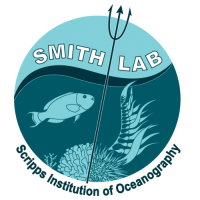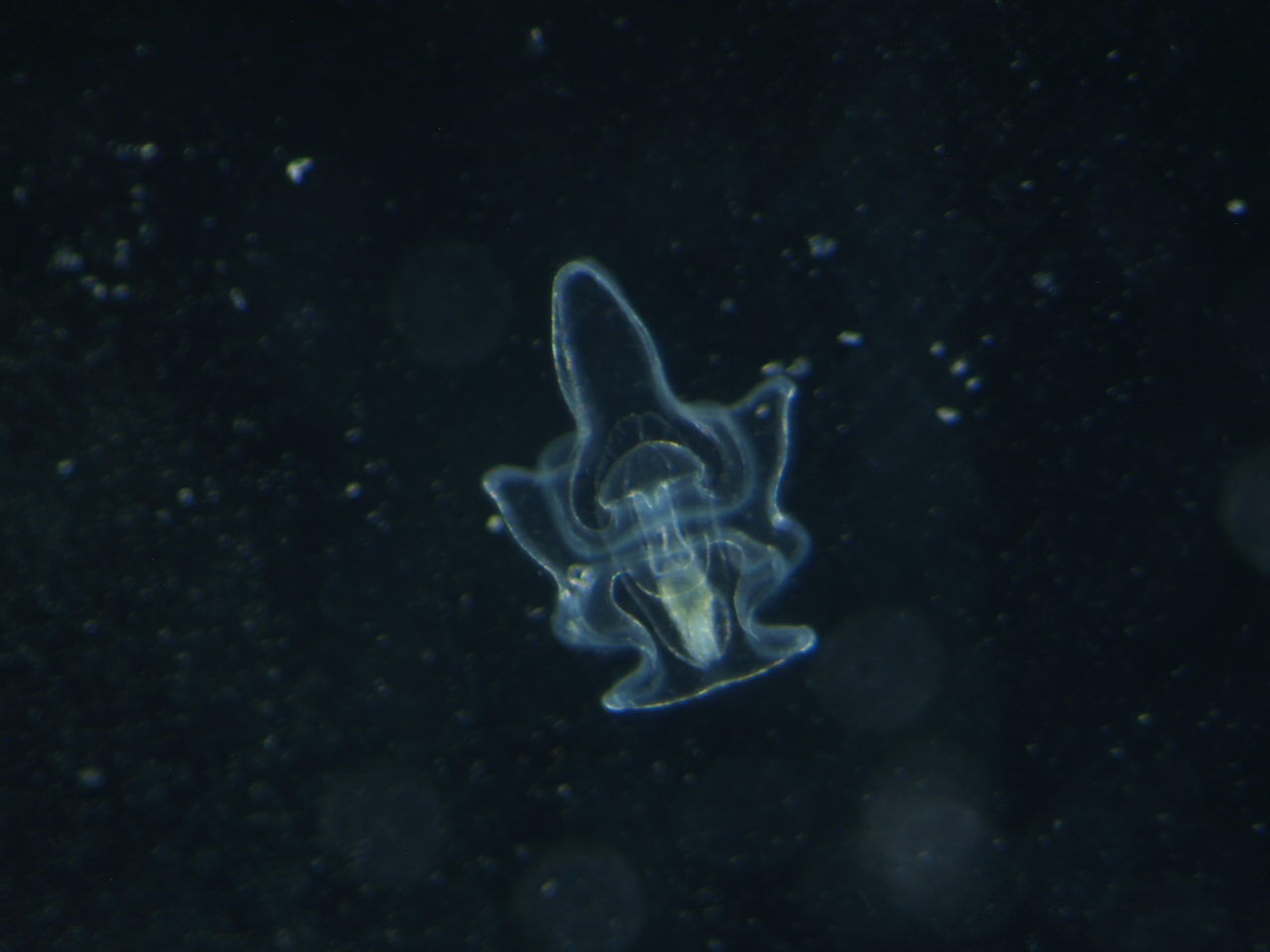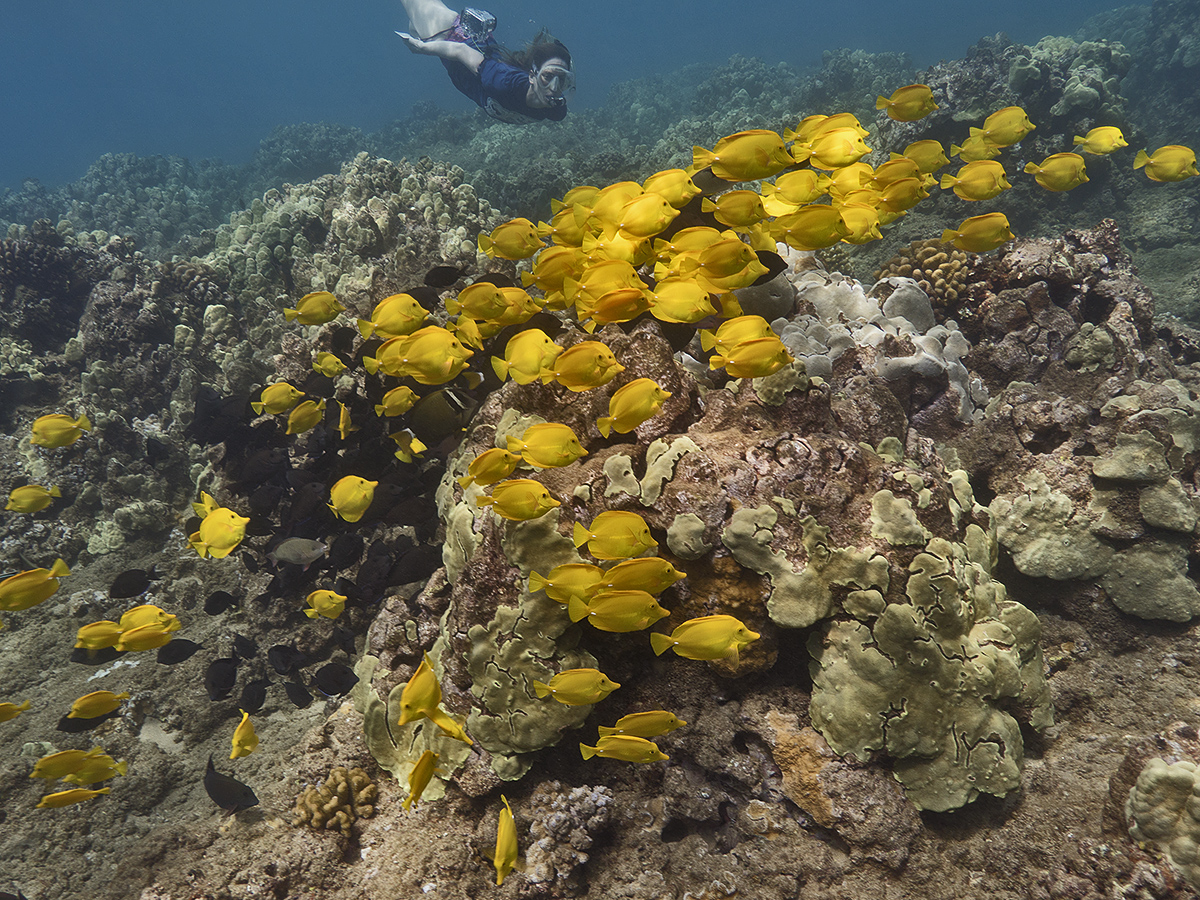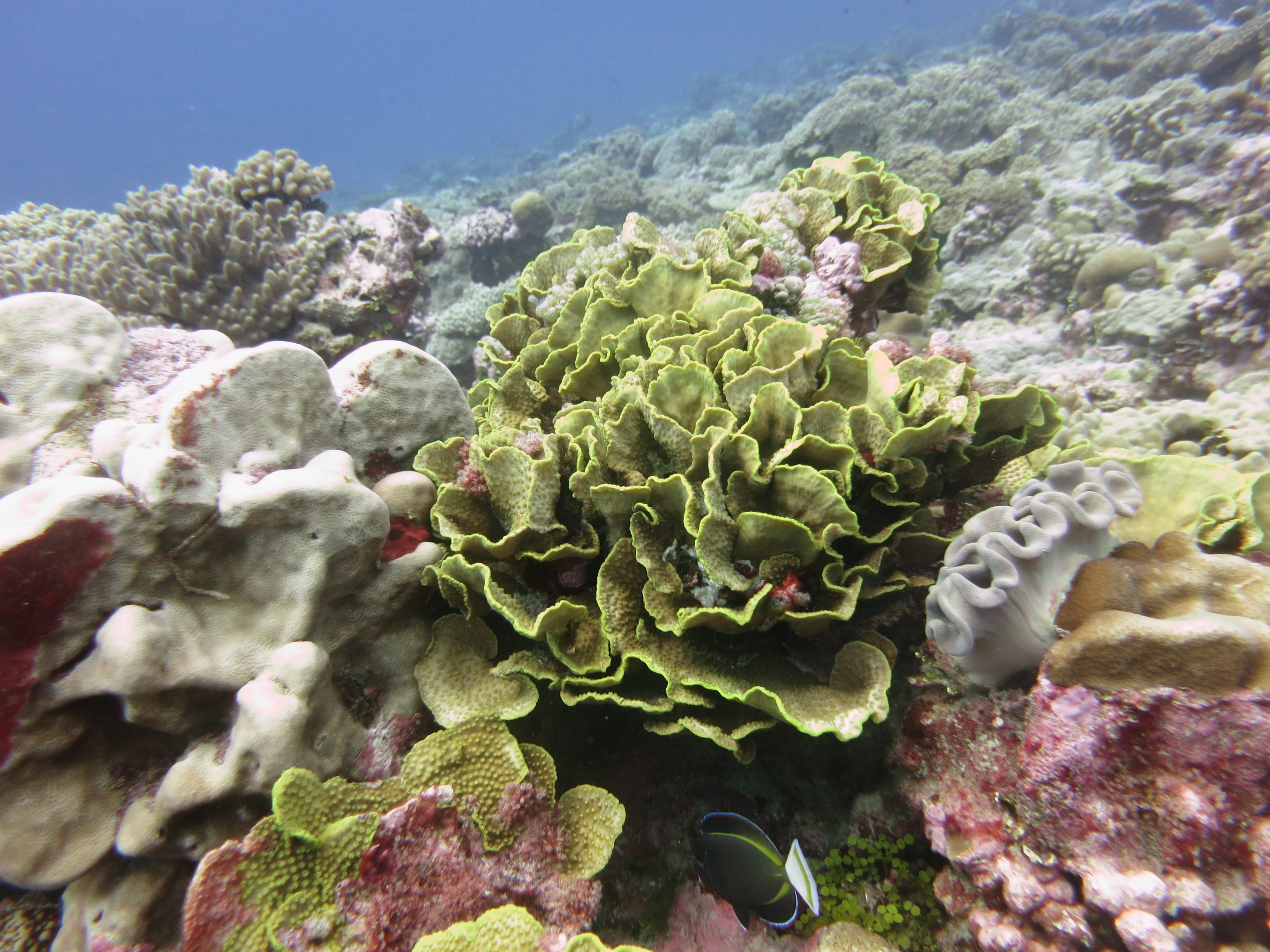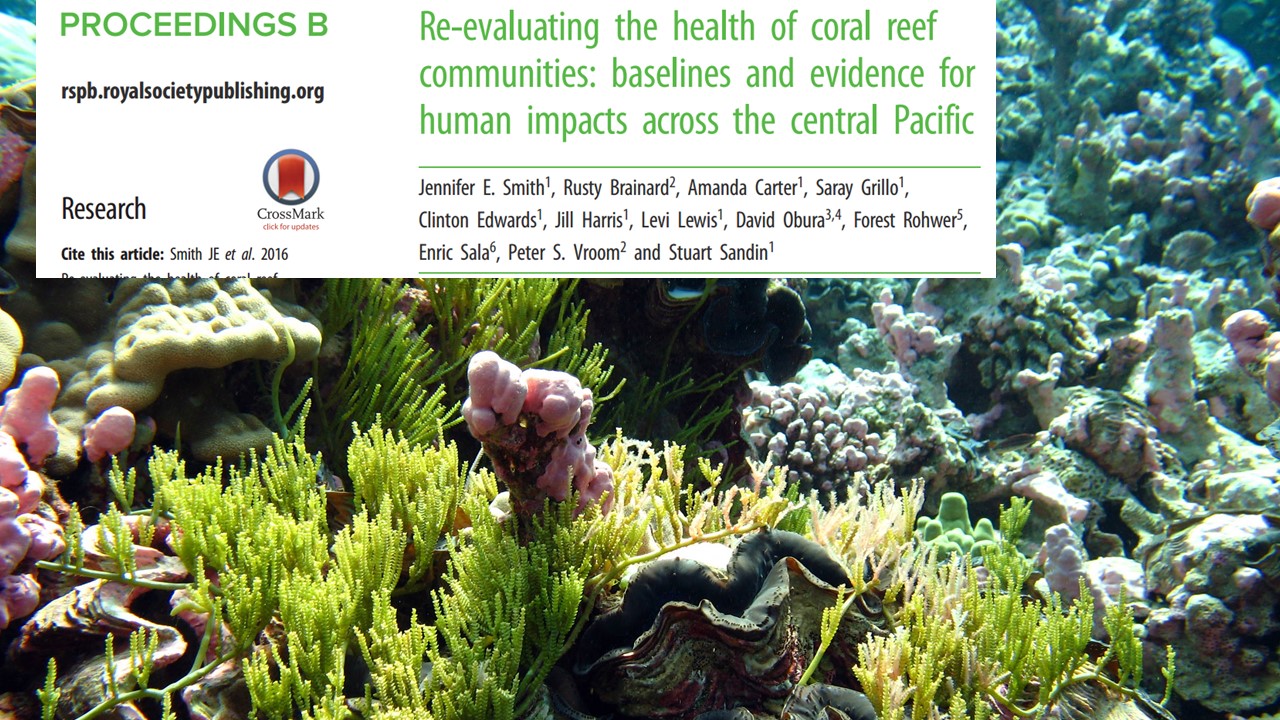Crown-of-Thorns Starfish Larvae can feed on Organic Matter Released from Corals Ryota Nakajima, Nobuyuki Nakatomi, Haruko Kurihara, Michael D. Fox, Jennifer E. Smith, and Ken Okaji Abstract: Previous studies have suggested that Crown-of-Thorns starfish (COTS) larvae may be able to survive in the absence of abundant phytoplankton resources suggesting that they may be able to utilize alternative food sources. Here, … Read More
Do different species of herbivorous fish have unique grazing roles on coral reefs, or are they all grazing alike?
Coral reefs are home to a large diversity of organisms. The herbivorous fishes, those fish that eat algae in competition with corals, are no exception to such diversity. But do the many species of herbivores have unique grazing roles on reefs or are all herbivorous fishes grazing alike? This was the focus of a study recently published in Oecologia … Read More
Smith lab and colleagues present an autonomous approach to measure coral reef net calcification and production rates
Assessment of net community production and calcification of a coral reef using a boundary layer approach Abstract: Coral reefs are threatened worldwide, and there is a need to develop new approaches to monitor reef health under natural conditions. Because simultaneous measurements of net community production (NCP) and net community calcification (NCC) are used as important indicators of reef health, tools are … Read More
New publication from Smith lab & colleagues: Meet the Benthic Underwater Microscope (BUM)
Underwater microscopy for in situ studies of benthic ecosystems Abstract: Microscopic-scale processes significantly influence benthic marine ecosystems such as coral reefs and kelp forests. Due to the ocean’s complex and dynamic nature, it is most informative to study these processes in the natural environment yet it is inherently difficult. Here we present a system capable of non-invasively imaging seafloor environments and organisms … Read More
Palmyra Atoll Bleaching Update (May 2016)
The abnormally warm water event associated with El Niño has been pummeling coral reefs worldwide. Last week the Sandin and Smith labs from Scripps Institution of Oceanography embarked on a rapid response expedition to survey the damage of the warm sea surface temperatures at one of our long term monitoring sites. Palmyra Atoll, a tiny island in the central Pacific, … Read More
Smith lab and colleagues publish new paper looking at microbes on coral reefs
Global microbialization of coral reefs Abstract: Microbialization refers to the observed shift in ecosystem trophic structure towards higher microbial biomass and energy use. On coral reefs, the proximal causes of microbialization are overfishing and eutrophication, both of which facilitate enhanced growth of fleshy algae, conferring a competitive advantage over calcifying corals and coralline algae. The proposed mechanism for this competitive … Read More
Congratulations to the Smith and Sandin Lab Undergraduates!
Congratulations to all of the Smith and Sandin lab undergraduates for their presentations at the Scripps Undergraduate Research Symposium? Special Congrats to Ellen Williams and Madeline Anderson for winning best poster awards!
Published Results on Invasive Algae in San Diego
Smith Lab members Niko Kaplanis and Jill Harris recently published the results of their San Diego County non-native algae research project conducted between 2012 and 2014. This work documented patterns of establishment, spread, and persistence for two non-native algal species in San Diego county and analyzed this invasion in the larger geographic context of the entire Pacific Coast of North … Read More
SOAR with me underneath the Scripps Pier!
It is another beautiful day in paradise. This paradise is sunny San Diego, California. Today we’ll suit up for a dive underneath the pier at Scripps Institution of Oceanography to visit our underwater instruments for a cleaning and calibration water sample. I have done this dive over 200 times, but thankfully it doesn’t get old. I have been able to … Read More
From the Pristine to Degraded: Reefs of the Central Pacific
Scripps led research team assesses the impacts of human disturbance on coral reefs. In one of the most comprehensive assessments of Pacific Ocean coral reef health spanning 10 years, 56 islands, and five archipelagos, Scripps Institution of Oceanography at UC San Diego marine ecologist Jennifer Smith and colleagues examined how coral reef communities at 450 sites are faring with … Read More

